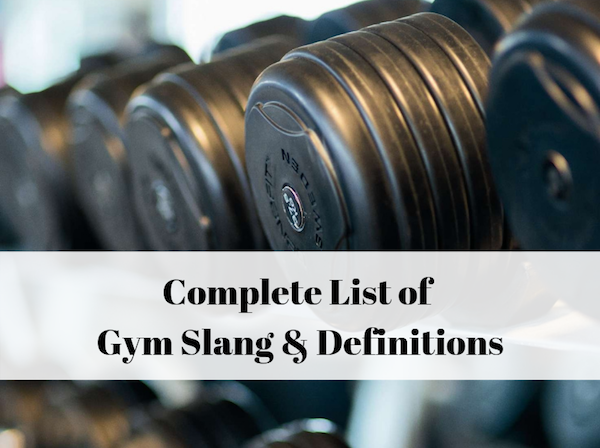
The gym can be a confusing place when you’re new.
Not only do you need to figure out what workout you want to do, you need to figure out where the right equipment is, how to use it properly, and absorb a ton of gym etiquette while you’re at it!
To help you get started when you’re totally new to the gym, here is a complete guide to gym slang, lingo, vocabulary, and terminology you’ll probably hear when you walk around any big box gym.
(Plus, explanations of a few things you might see and not recognize.)
Let’s jump right into it!
People You’ll See At The Gym
Bodybuilder
Anyone who’s there to train primarily for aesthetics, or the way their body looks.
The word bodybuilder implies someone who’s competiting either at an amateur or professional level in some kind of physique-based contest.
Powerlifter
On the hand, you have powerlifters who train primarily for strength and pay very little attention to aesthetics and trying to sculpt their six-pack.
They’re performance athletes, and the name again implies that they’re training to compete in some way.
CrossFitter
Anyone who regularly practices CrossFit, which is a multi-discplinary fitness regimine that combines strength training, bodyweight exercise, and cardio.
Gym Rat
Anyone who seems to be at the gym constantly is a gym rat!
Personal Trainer
Personal trainers are professionals who help their clients get into shape by guiding them through workouts and helping them dial in their nutrition.
Most gyms have in-house personal trainers, but you’ll also see independent trainers working with people occasionally at most gyms.
Weekend Warrior
People who are too busy to workout during the week but absolutely crush it on Saturday and Sunday.
Yogi
Yoga fanatics!
A lot of gyms will have regular yoga classes, so it’s not uncommon to see people filing in and out carrying their yoga mats and other equipment, or limbering up over on the mats in the corner.
Newbie
Someone who’s completely new to the gym. You can usually tell pretty quickly who’s new!
Types of Workouts
Circuit Training
Circuit training is a style of workout where you move quickly from one exercise to another, usually resistance-type exercises, with a minimal amount of rest.
It’s similar, though not exactly the same thing, as HIIT. The key differentiator here is that you must move between tareting different muscle groups in circuit training workouts.
HIIT
HIIT, or high-intensity interval training, is similar to circuit training in that you move from one exercise to another in rapid fashion.
However, the intensity is usually higher in HIIT and the exercise selection doesn’t matter quite as much. You can perform HIIT on a treadmill by alternating sprints and resting or walking, however circuit training workouts need to involve many more muscles with different movements.
Cardio
Any conditioning workout where you challenge the endurance and performance of your heart and lungs, like running, cycling, or using the elliptical.
Lifting
Performing weight lifting movements with dumbbells or barbells in order to gain strength and/or muscle.
Plyometrics
This is an explosive style of training primarily based around jumping and hopping.
In plyometric training, you might jump onto a platform repeatedly or hop over a low bench to build explosive power in your lower body.
Calisthenics
Calisthenics is the discipline of developing your strength on bodyweight exercises like pushups, pull-ups, planks, and more advanced movements like front levers and flag holds.
Any kind of conditioning that doesn’t use equipment, however, can be considered calisthenics, including running.
Nutrition Talk & Terminology
Bulking
In order to put on new muscle and add size, lifters will often “bulk,” which means to eat more calories than their body technically needs.
Combined with proper strength training, the extra calories allow the body to build new muscle.
Cutting
On the other side of the spectrum is cutting, or cutting weight.
This is when you eat in a small calorie deficit each day in order to promote fat loss.
Macros
Macros, or macronutrients, refer to the amount of fats, carbohydrates, and proteins you eat in a given day; along with total calories.
Tracking macros is one of the key components of a successful bulk or cut.
Maintenance
“Eating at maintenance” or “eating maintenance calories” means setting your macros so you neither gain or lose weight.
You’ll eat about the same number of calories your body burns in a typical day, keeping your overall weight the same.
Recomp
Attempting to gain muscle and lose fat at the same time, or “recomposition” your body.
Usually, this means eating in a calorie surplus on lifting days and a deficit on rest days, though there are many variations and different ways to recomp.
Equipment At The Gym
Power Rack
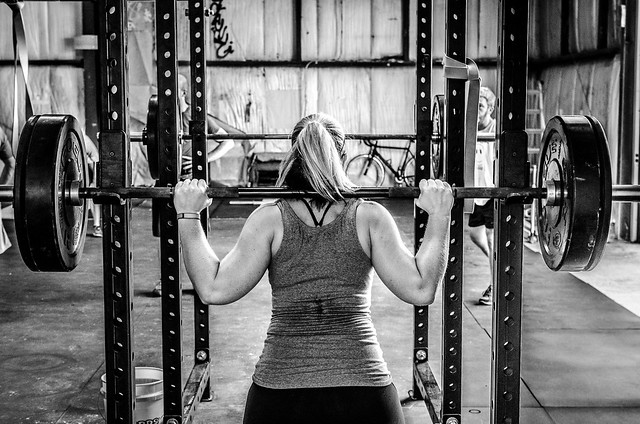
A power rack is a four-pillar cage, usually made of iron or steel, that supports a weighted barbell and assists in a variety of lifting exercises.
Squat Rack
A squat rack is similar to a power rack, but usually only has two pillars. It does not fully enclose the barbell, and is designed to give you more room to back away from the apparatus to freely perform squats.
Dumbbell
Dumbbells are small, handheld weights used for weightlifting exercises.
Dumbbells can be as little as half a pound and as heavy as 150 pounds or so, though most commercial gyms will only have dumbbells up to 80-100 pounds.
Barbell
A barbell is a long, 45-pound steel bar that can be loaded with additional weight on each side.
You can use these to perform exercises like the bench press, squats, deadlifts, and more.
Kettlebell
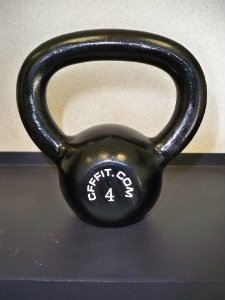
A kettlebell is a round weight with a handle on the top, capable of sitting flat on the ground.
They can be easily gripped by one or both hands and are usually used for dynamic, athletic-type movements (like kettlebell swings).
EZ bar
The EZ bar is a smaller, 25-pound steel bar that’s bent at an angle in two places, allowing you an easy place to grip it with each hand.
EZ bars are a little bit easier on your wrists when doing certain movements like bicep curls.
Trap bar
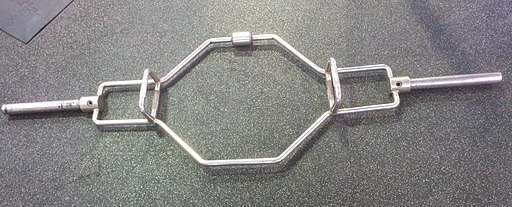
Trap bars are usually used to provide better leverage and a slightly safer way to perform deadlifts.
Plates
Plates are (usually) round, iron weights that can be loaded onto a barbell, EZ bar, or trap bar to perform weightlifting movements.
It’s common to find plates as light as 2.5 pounds at most gyms, all the way up to 45 pounds.
(Read: How much is a plate?)
Free weights
Free weights is an all-encompassing term that refers to any weight that’s not attached to an apparatus.
Plates, dumbbells, and kettlebells are all free weights.
Clamps
Clamps are the little tension-spring thingies that you slip onto the end of a barbell in order to hold the plates securely in place.
Lifting Terminology
Compound Movements/Lifts
Any lifting exercise to uses multiple joints and works multiple muscles.
Examples of compound lifts:
- Squats
- Deadlifts
- Bench press
- Standing press
Isolation Movements/Lifts
Any lifting exercises that, at least in theory, isolates a single muscle group at a time.
Examples of isolation lifts:
- Bicep curls
- Skullcrushers
- Tricep pushdowns
- Wrist curls
Sets & Reps
A rep is one repetition of a movement. So if you lower the bar to your chest on the bench press, and press it up to the fully-locked out position once, that’s one rep.
A set is multiple reps performed at once with no rest. If you do 5 reps of the bench press and then re-rack the bar, you just completed one set of 5 reps.
There’s no correct amount of reps that make up a set, or a number of sets that you “should” do. It all depends on your training style and goals.
Failure
Failure is when your muscles literally “fail” or give out during an exercise.
If you complete 5 reps of the bench press, like above, and then you’re unable to finish the 6th rep, that means you hit the failure point.
Training to failure is usually not advised as it can be dangerous and can wear out your body.
Forced Reps
When you have a spotter (see below for definition!), they may be able to help you “grind” out a few extra reps by carrying some of the load.
These are called forced reps.
Negatives
Negatives usually refer to the “eccentric” portion of a weightlifting movement, or the part of the movement that stretches and elongates the muscles (rather than contracts them).
Imagine doing a bicep curl. You bring the bar up, then as you lower it again, that’s the negative.
In some forms of training, lifters will perform very slow negatives or even negative-only reps.
Progression or Progressive Overload
A core principles of lifting is that you must lift heavier weights over time in order to gain muscle and strength.
(You can also improve performance by performing more reps with the same weight or decreasing rest times.)
This concept is called progression or progressive overload.
Supersets
In superset training, you move directly from a set of one exercise to a set of another exercise with no rest.
In most training routines, you’ll either superset exercises that work the same muscles (bench press and chest fly, for example), or opposing muscles (triceps pushdown and bicep curls, for example).
Split
Refers to how you “split” your training up in a given week.
A 2-day split means you lift twice per week. A 3-day split means three times per week.
Common splits give each main muscle group their own day in the gym; you’ll also commonly see upperbody-lowerbody splits, push-pull-legs, and other custom splits.
Max and Maxing Out
Your “max” on a lift usually refers to your one-rep max, or how much weight you could lift for a single rep if you gave 100% effort.
Usually, people don’t actually try to hit their one-rep max while they’re training because it can be extremely strenuous and dangerous if you don’t know what you’re doing. So most lifters will train in a variety of different rep ranges.
If you do decide to try to hit one rep for as much weight as possible, it’s called “maxing out.”
Bro science
Any kind of psuedo-science or questionable nutrition advice given out by muscular gym bros is called Bro Science.
You might hear from these guys that you need 300 grams of protein per day (false) or that a 5-day split is the best way to build muscle (also false).
It’s myth and hearsay labeled as fact, for the most part.
DOMS
DOMS stands for Delayed Onset Muscle Soreness.
You know when you’re so sore after leg day you can’t walk?
Yeah, that’s DOMS.
Gains
Gains just refers to any progress made in the gym.
You can earn muscle gains, strength gains, or even endurance gains!
(Read: What are gains in weightlifting?)
Guns
Guns = arms.
Leg day
A lot of programs dedicate a single day per week exclusively to leg training.
That gloriuos day is called “leg day.”
(Read: What is leg day?)
Arm day
Some programs also feature one arm day per week to really hit the biceps and triceps hard.
Miring
Short for “admiring.”
As in, admiring someone’s sculpted guns!
Muscle Confusion
Muscle confusion is a controversial idea that refers to mixing up your training stimulus frequently in order to shock or confuse your muscles.
It’s meant to force them to adapt to stimuli without accommodation, so you’re always making gains.
Prepping
When a bodybuilder is getting ready for a show or contest, they’re “prepping.”
This usually means they’re going on an intense cut to get shredded.
V-Taper
When you have a strong, wide back and a narrow, lean waist, you’re said to have a V-Taper (because your torso develops a V-shape).
This is a common aesthetic goal for lifters.
Vascular
When someone’s vascular, it means they’re lean enough and muscular enough that you can see their veins prominently through their skin.
Pump
After a good workout, your muscles will look “pumped” up and fuller due to increased blood flow and some inflammation in the area.
Form
All lifting exercises can be performed correctly or incorrectly. How well you perform them is referred to as your “form.”
For example, bad form on the bench press would be flaring your elbow and lifting your butt off the bench.
Pre-workout
A pre-workout is a drink you take before you hit the gym for energy and improved performance.
They usually have a good amount of caffeine in them, along with some other compounds that are supposed to help you lift more, reduce fatigue, and experience improved recovery.
Range of motion or ROM
The range of motion of an exercise refers to where you begin and end a lift.
Full range of motion on the bench press, for exampe, requires touching the bar to your chest and pushing it up to a full lockout position.
Chalk
Some lifters use powdered chalk for a better grip on heavy lifts, especially the deadlift.
If you see white powder all over the weights in your gym, that’s probably what it is!
Plateau
When you’re unable to get stronger on a certain lift and continue your progression, you’re said to have hit a “plateau.”
PR
A PR, or a personal record, refers to a new high achievement on a certain lift.
If you’ve only ever benched 150 pounds for 5 reps, and you come into the gym and hit 155 for 5 reps, that’s a PR.
You can also hit a PR by adding reps. 150 for 6 reps, in this case, would also be a PR.
There’s also bodyweight PRs and lifetime PRs. It’s common to lose some strenght as you get leaner and lose weight, so you may need to adjust your personal records based on your weight. A lifetime PR would be the heaviest you’ve ever lifted at any point in your life.
Rest
After your perform a set of an exercise, you’ll usually rest for some predetermined amount of time depending on what style of training you’re doing.
It’s common to rest about 2-3 minutes between sets on big compound movements, and a little less for isolation exercises.
Warm Up
Before lifting heavy, most lifters will warm up by performing lifting exercises with light weights.
For example, before squatting 225 pounds, they might do a few short sets with just the barbell, then 95 pounds, then 135, and so on.
Natty or Fake Natty
Short for natural, a “natty” is someone who trains and builds their physique without the use of any performance enhancing drugs or steroids.
A fake natty is someone who pretends to be natural and hides their steroid or drug use from others.
(Read: What is a fake natty?)
Lifting & Other Exercises
Bench Press
An exercise where you lay flat on a bench and lower a loaded barbell or dumbbells to your chest, then push with your chest and triceps to lock the weight out directly above you.
Deadlift
An exercise where you pull a loaded barbell off the floor (a “dead” weight) and lock out your body into a standing position while holding the weight.
Dips
A chest, shoulders, and triceps exercise where you grab two elevated handles and lower your body between them (“dipping” your body down), then push back up to the locked out position.
Standing press, shoulder press, or military press
An exercise where you unrack a loaded barbell from the standing position and let it touch your upper chest, then push with your shoulders and triceps to lock it out directly above your head.
Burpees
A brutal conditioning exercise where you drop to the floor, perform one push up, jump back to your feet, and then leap vertically with your arms above your head.
You usually repeat this for reps or time, and it’s completely exhausting!
Planks
An isometric core exercises where you lay on the ground with your torso elevated and supported only by your hands (or elbows) and feet. Keep your abs tight and hold for time.
You can also perform side planks by rotating your body 90 degrees and balancing on one foot and one elbow.
Pull Ups or Chin Ups
A back and biceps exercise where you grab a bar (often in a power rack or a power tower) and pull yourself up, bringing your chin above the top of the bar, and then back down.
Skullcrushers
A triceps exercise using dumbbells, a barbell, or the EZ bar, where you lay flat on a bench (or on a small incline) and lower the weight toward your forehead without moving your elbows.
This provides a deep stretch on your triceps. Then, reverse the movement and lock the weight out again.
Squats
Using bodyweight, a barbell, or a dumbbell (called a goblet squat), you’ll quite literally squat down to full depth while keeping your core tight and back straight. Use your quads, glutes, and hamstrings to explode back up to the starting position.
Machines At The Gym
Pec Deck
A machine that can be used for chest flys or rear delt flys, depending on which direction you sit on it.
It has two handles and rotates around a circular axis.
Cables or Cable Machine
A multi-function machine that uses pulleys and cables attached to a weight stack. You can perform a nearly unlimited number of exercises depending on how you position the handles and which attachments you use.
Leg press
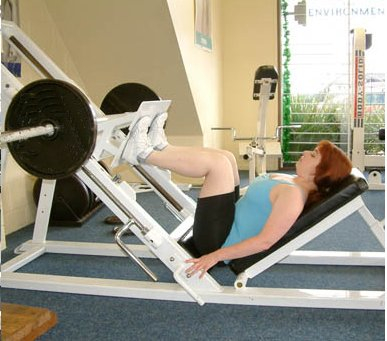
Lat pulldown
A machine with a straight bar attached to a weighted stack via pulley. You sit upright and pull the bar down with your arms and back, mimicking the motion of a pull up.
Chest press
A machine that mimics the movement of the bench press.
Power tower or dip stand
An apparatus that allows you to perform dips, pull ups, and leg raises.
Treadmill
A machine with a moving belt you can walk, run, or sprint on.
You can control the speed and elevation for a customized workout.
Recumbent bike
A stationary bike in which you’re seated lower to the ground with your torso leaning back into a seat.
Upright bike
A stationary bike where you’re elevated higher off the ground, leaning slightly forward onto a pair of handles.
Rowing machine
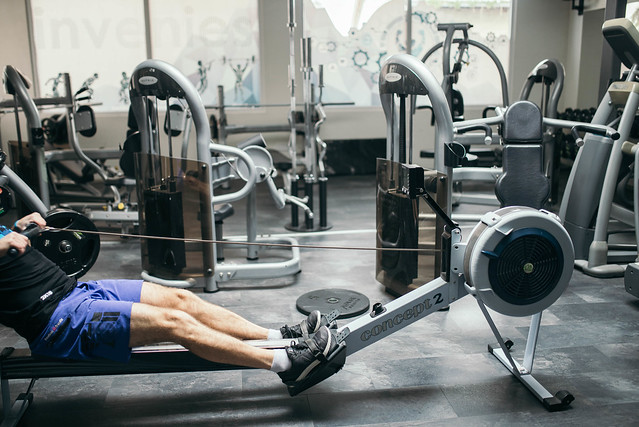
A workout machine where you’re seated low to the ground, grasping a handle. You’ll press with your leg and engage your back and biceps to pull the handle and pulley as far back as you can, then you’ll glide back to the start position and repeat.
It mimics the act of rowing a canoe or kayak.
Stair machine
A treadmill with stairs instead of a belt!
If you’ve ever wanted to walk up an endless flight of stairs, this machine is for you.
Elliptical
A unique full-body cardio machine that mimics the motion of running, but with no impact.
You’ll use your legs and arms to drive the machine through a smooth range of motion.
Etiquette
Spot or spotter
When lifting heavy, it can be helpful to have a partner or fellow gym-goer help you if you hit failure and can’t lift the weight. This person is called a spotter.
Exercises that put you in a more vulnerable position, particularly the bench press and incline bench press, are the most common lifts that might require a spotter.
Work in
If you need a machine or rack, but it’s already in use by someone, you can ask them to “work in.”
That means you’ll take turns using the equipment. While they’re resting, you’ll perform a set, and while you’re resting, they’ll perform a set.
Load and rack
When gearing up for a lift, you’ll “load” the plates onto a barbell.
When you’re done, if you’re a decent person, you’re rack the weights and put them back where they came from!
This is a huge point of etiquette in most gyms. Never leave weights lying around or loaded onto a barbell when you’re done.
Wipe down
If you’ve left sweat (or any other fluid) on a piece of equipment, it’s common courtesy to wipe it down.
Most gyms will have wet wipe dispensers all over the gym for this purpose.
Wrapping Up
So that’s it! That’s just about every piece of slang and vocabulary you’ll need to know in order to hit the gym with confidence.
I hope it helps!
What did I miss? Let me know in the comments and I’ll add it to the list.
(And if you found this helpful, check out the rest of my guide to getting fit for total newbies.)